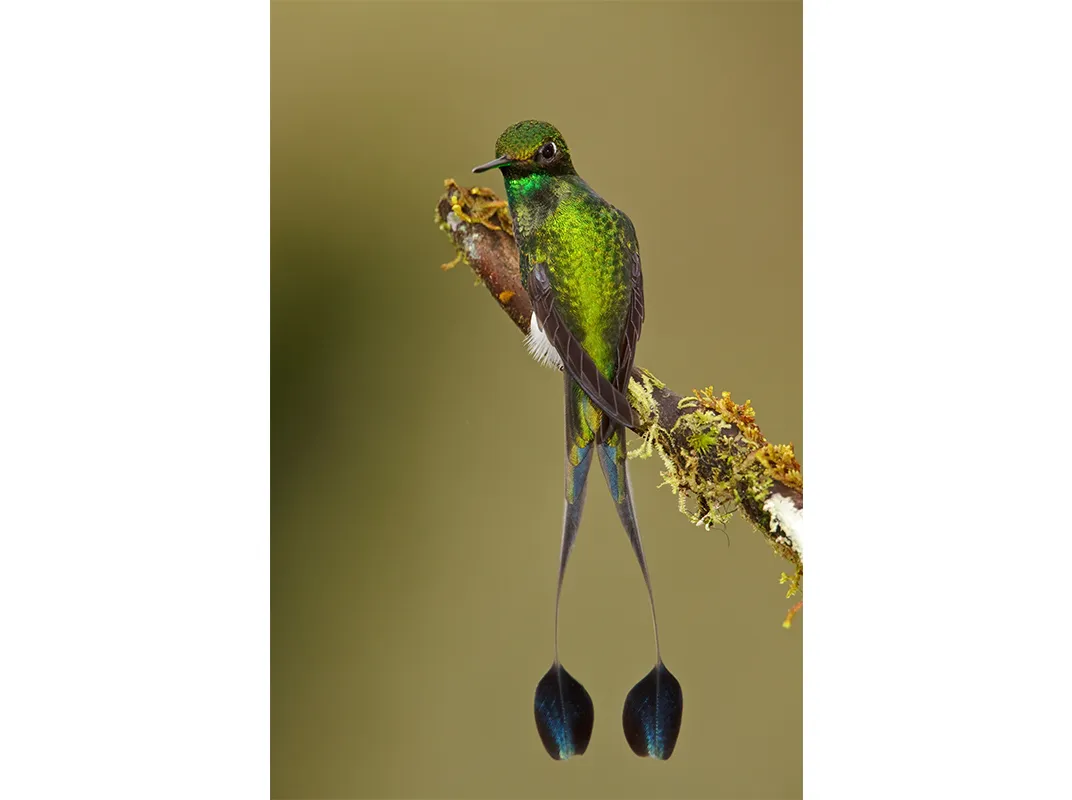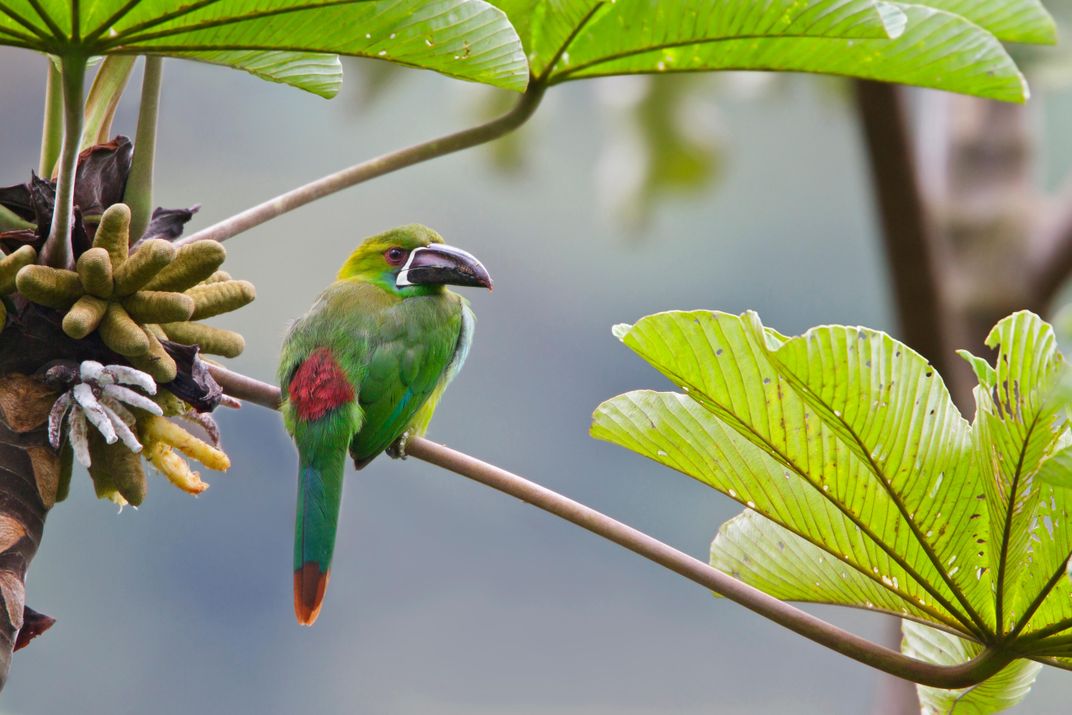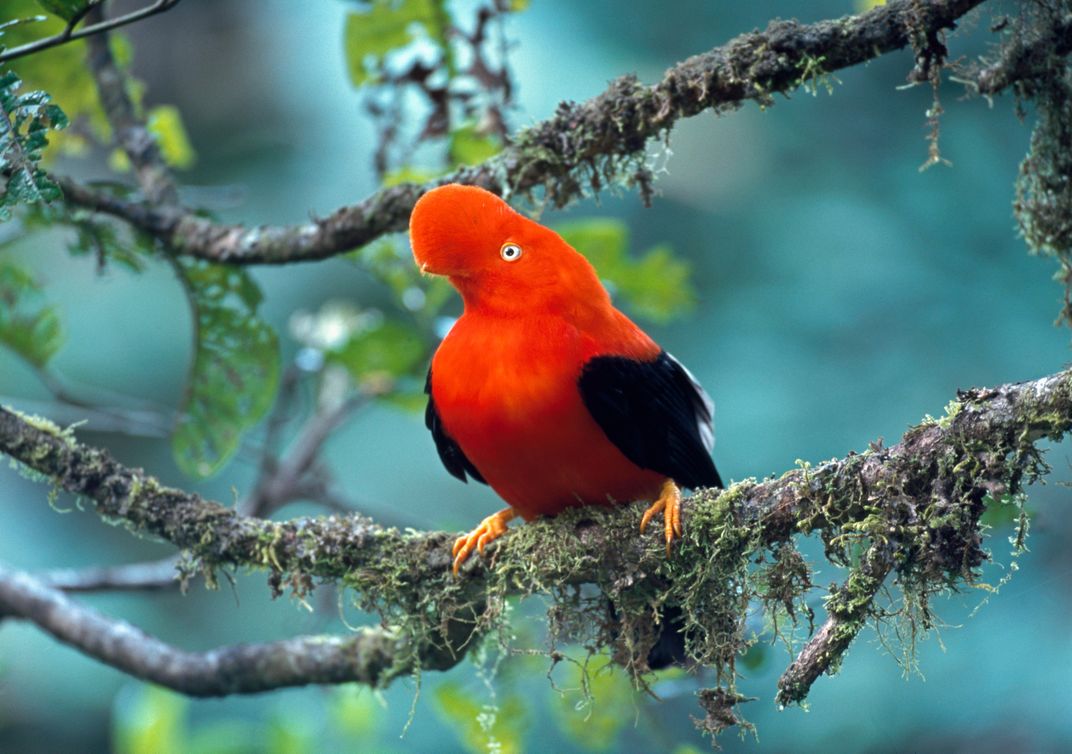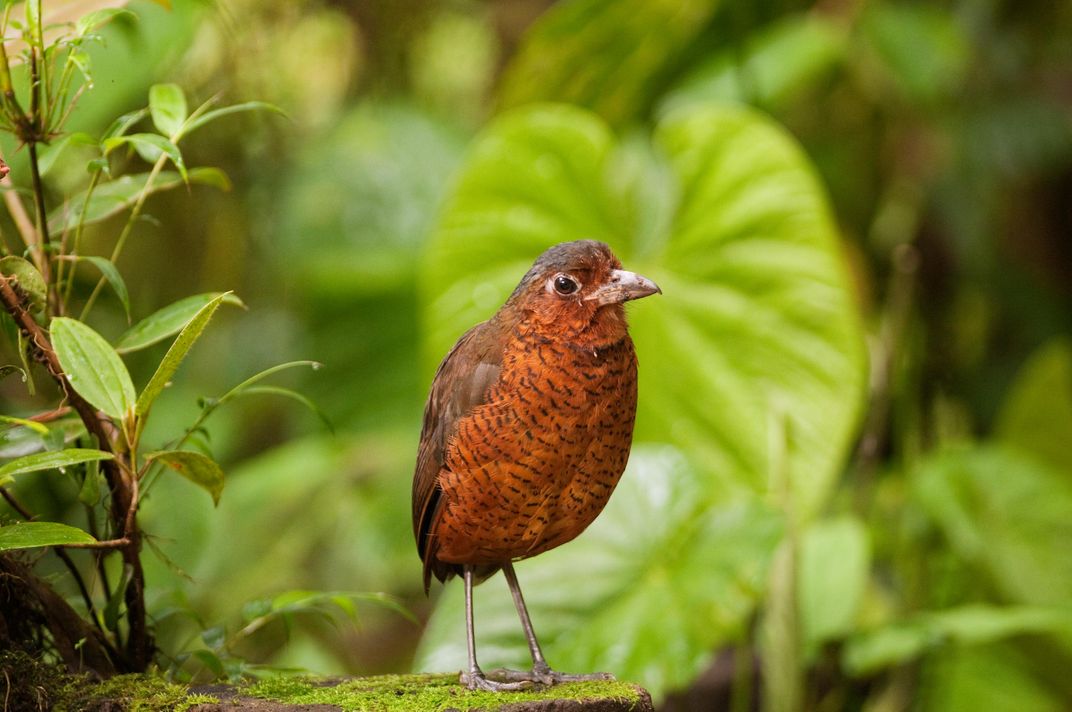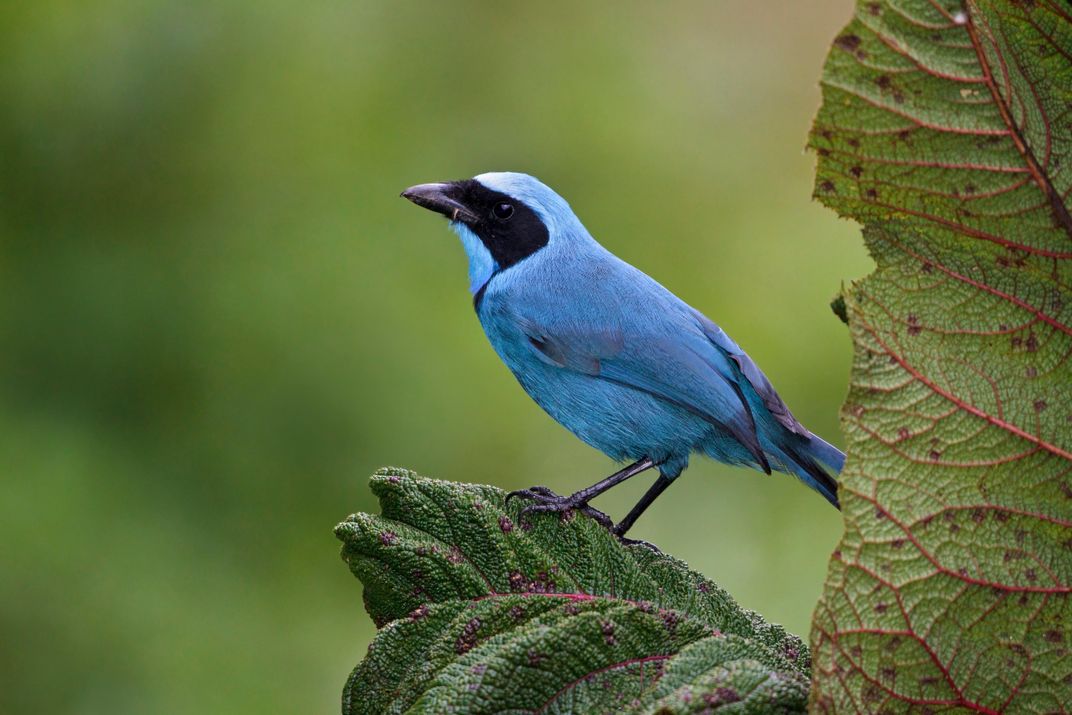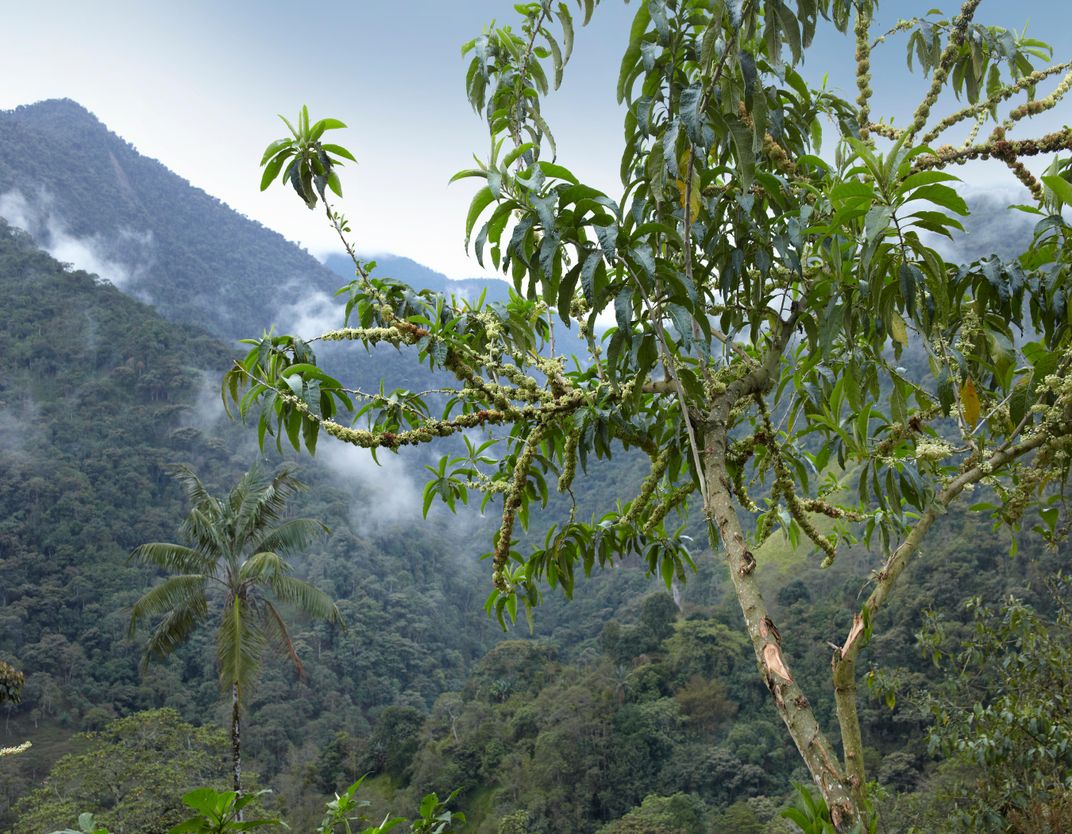Why Birdwatchers Flock to Ecuador
Home to the highest density of bird species per acre on Earth, the country is a birder’s paradise
“Maria! Maria!” yells Ángel Paz, who stands at my shoulder in a thick Ecuadorian cloud forest holding a can of worms. “Venga, venga, venga!” (Come, come, come!) he shrieks.
At my other shoulder is Edison Buenano, an enthusiastic, 30-something bird-watcher from Quito who suggested we visit Paz’s farm in northwestern Ecuador’s Tandayapa Valley. The three of us stare into the forest’s dark, lush undergrowth and wait.
“Maria!” shouts Paz again, this time tossing a worm into a tiny clearing. Thirty seconds later a strange, beautiful creature hops out of the shadows. It’s Maria—standing about six inches tall and upright on long legs, with burnt-sienna feathers, black pen-and-ink scallop chest marks and a big dark eyeball. Whoa! There is no mistaking this giant antpitta, one of Ecuador’s rarest and most seldom-seen birds. My heart pounds as if I’d spotted a unicorn.
Giant antpittas are statuesque and picturesque, yet humans don’t usually see them because of the species’ shy and elusive nature. But these opportunistic birds have been known to follow large mammals in the forest to scavenge stirred-up bugs, so Paz’s hand-feeding strategy makes some biological sense.
I snap this one’s photograph, standing so close that I might reach out and touch it. My quiet fist pump has Paz and Buenano exchanging big grins.
This giant antpitta is a “lifer” for me—lingo for a species that a birder sees in its wild natural habitat for the first time. And this year, every bird counts. My quest to see 5,000 species of birds (about half the world’s total) in 2015 will take me across all seven continents and through 35 countries. If successful, I will set a new world record, breaking a British couple’s count of 4,341 species in 2008. More important, I hope my tally inspires a new generation of citizen scientists worldwide.
I have seen bird-watching expand globally over the past ten years as birders from China to Cameroon, Indonesia to India, Ethiopia to Ecuador have taken advantage of an explosion of field guides, advances in binocular optics and new smartphone apps to see what’s flitting around. And for the first time, birders can find like-minded souls all over the world through the Internet. I couldn’t accomplish my goal without this international network of locals willing to share their “backyards” with me.
Ángel Paz could be the poster child of local-scale birding. Paz used to log trees on his cloud forest property but realized eight years ago that he could earn more through ecotourism and farming blackberries. When he discovered that visiting birders went crazy over seeing a giant antpitta, he gradually befriended a pair of the birds, naming the female Maria. That led to him becoming obsessed, and soon knowledgeable, about other bird species in the forest.
After Maria disappears into the thicket, we continue down the muddy path, Paz happily pointing out a lyre-tailed nightjar, a couple of bizarre, bright-red Andean cocks-of-the-rock and a family of dark-backed wood-quail.
Lyre-tailed nightjars like these typically roost all day, and the male is unmistakable, flaunting impressive pale-tipped tail streamers that can measure two feet long or more. The flashy Andean cock-of-the-rock may be the most recognized bird in the Andes cloud forest, and one of the most bizarre: During the height of mating season, the males gather in groups and energetically jump up and down on branches and make low, croaking noises. I was pleased to see the wood-quail too, which Paz is teaching to eat bananas; these forest-loving birds, with their loud, rollicking chorus, inhabit a very small and fragmented range—less than 2,500 square miles.
Three hours pass before we return to the farmhouse for platefuls of steaming arroz y frijoles, cooked by Paz’s wife (as it turns out, also called Maria). An albino booted racket-tail, a feisty, long-tailed hummingbird, one of about 132 hummer species found in Ecuador, briefly appears at Paz’s feeder as we eat. It’s the feather in the cap of a morning to remember. The 27 new species I’ve seen today bring my working total to 1,621.
There’s no need to be a hard-core birder—or even to be very good at it—to enjoy the treasure hunt of spotting our feathered friends. And Ecuador, with its good infrastructure, strong ecotourism history and more than 1,600 bird species—the highest density of bird species per acre on Earth—is one of the world’s best places to get beak to eye. The country’s extreme biodiversity arises from a varied geography and tropical climate: Within a couple hours’ drive of Ecuador’s capital of Quito, a traveler can reach the Pacific Ocean, a 19,000-foot volcano, a misty cloud forest, the high Andean valleys and the Amazon jungle.
If you’re visiting Ecuador, I recommend the Tandayapa Valley area, a few hours’ drive northwest of Quito, for maximum bird and terrain exposure. Several excellent lodges cater to nature lovers. Don’t forget a stop at Ángel Paz’s nearby property.
Consider birding with a local rep wherever you travel. You’ll see far more birds and learn a whole lot more about them with a knowledgeable guide. Among the best websites to connect to a fellow bird brain is Birding Pal. Birders can add themselves to BirdingPal’s international directory organized by country and region. The site features maps and associated lists of possible host birders. The usual guest rules apply, of course: Be polite, be appreciative and don’t freeload.
Follow Strycker's quest to see 5,000 bird species this year.
Planning Your Next Trip?
Explore great travel deals
Smithsonian magazine participates in affiliate link advertising programs. If you purchase an item through these links, we receive a commission.
